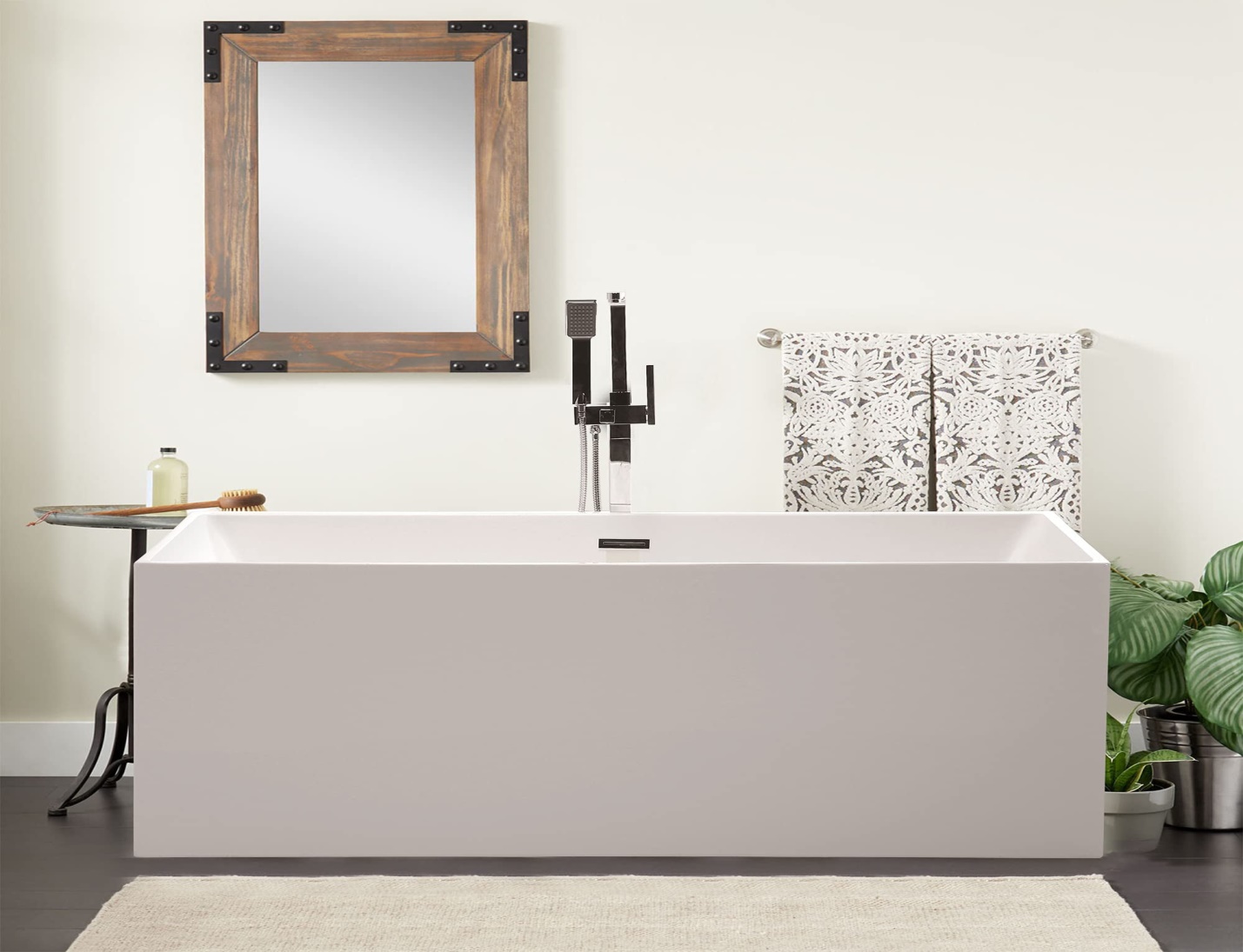One of the essential elements of the bathroom is a bath, which gave this name to the room. In the process of its selection, many factors must be taken into account, including those that affect the safety of its use.
The drain in the bath is an important design element that is often overlooked in the process of choosing plumbing. The drain provides water drainage, and together with the overflow, it helps to avoid flooding. A modern freestanding bath simply cannot exist without these elements. Which overflow option is better to choose? First, you need to understand the features of its application.
How does a bath overflow work?
Why is overflow needed? Thanks to this element, it is possible to avoid flooding the room if an unexpected set of baths occurs. The overflow is connected to the drain, helping to safely divert water directly to the sewer. The bathroom cannot be protected from flooding if the overflow is not connected to the sewer. It's presence and proper operation will help to avoid the costs associated with the deformation of finishing materials and the appearance of mold on their surface.
As soon as the liquid level in the bath reaches a certain limit, the water begins to pour into a special tube that drains it into the sewer. The overflow can be connected to an external pipe or connected to a drain system. Typically, the element is hidden behind the edge of the bathtub or installed directly into the wall, which provides a hidden installation of communications.
Does a bathtub need an overflow?
A modern manufacturer always provides for the use of elements and technologies that increase safety when using plumbing. Baths are first and foremost. Of course, to a large extent, the likelihood of flooding depends on the owner of the plumbing. Therefore, one cannot do without careful monitoring of the position in which the tap is located after using the bath. At the same time, draining and overflowing will reduce the likelihood that a set of liquids will develop into a full-fledged flood. The efficiency of the overflow depends on the diameter of the hole through which the liquid is discharged, with the pressure power.
The presence of an overflow in the bath does not mean that the buyer has nothing to worry about anymore. This element must be properly connected to the drain system. Otherwise, the overflow will not be able to perform its function and will only bring flooding closer. You also need to pay attention to the fact that various materials can be used to produce the overflow system, which includes:
How to choose the optimal solution? Here you need to look at the materials that were used when connecting the baths. If the drain system is assembled from PVC pipes and adapters, then it is better to use the overflow from this material. You should not choose brass elements in combination with plastic drain pipes, as in this case special adapters will be used, which can reduce the reliability and durability of the entire structure.
The high quality of the drain system is also determined by the components chosen to connect its elements. Usually, when bonding PVC, a certain solvent is used, which is selected according to the type of pipe. Choosing the wrong solvent can lead to leaks due to the lack of a complete seal. By choosing high-quality plumbing on the site https://www.aquaticabath.co.uk/category/freestanding-bathtubs, the buyer invests in his safety and comfort. The Aquatica brand line is distinguished by impeccable quality and stylish appearance. Stone is a solid material that is not subject to destruction under the influence of time and endures serious loads with regular use.
Are all bath drains the same?
There are many different types of drain systems on the market. Buyers can choose an option following the design features of the bath, budget, as well as material of production, as mentioned above. You always need to consider how the bath will be installed. If the drain system provides for the external location of the elements of the system, and the buyer plans to install the baths openly, then the overall concept of the interior may suffer. A plumbing product may include additional elements, such as a hydromassage for a jacuzzi. In this case, the drain system is selected solely taking into account the manufacturer's recommendations.
The equipment of the Luxury bathroom is selected depending on what materials will be used in its decoration. Each material has a certain set of properties that must be considered when choosing. So, brass is more demanding in terms of care than plastic. Therefore, when using a brass drain system, it is important to ensure free access. Most buyers choose bathroom fittings in the context of interior materials. If the drain system remains visible, then it should be made in the same style as the walls, as well as the plumbing. Thanks to a more careful choice, you can get a complete and harmonious interior.
Types of drain plugs for bathtubs
An element of the drain system, which is always in front of your eyes, is a cork. It is in direct contact with the body while taking a bath, and should also provide the closest possible fit to the plumbing structure. Cork can contrast with the surroundings if appropriate, but in most cases, it matches the surface of the tub in style and texture. When creating a cork, various mechanics of its application can be used. You need to choose a drainage system that will be convenient to use.
A flip drain is one of the common types of plugs. This design is equipped with seals that are located along the diameter of the cork. As a result of pressing the element into the bottom of the bathtub, the drain is sealed, which is maintained throughout the entire period of water procedures. Typically, the system is equipped with a special lever that provides sealing and depressurization after taking a bath.
The lift-and-turn system is also actively used by manufacturers of bath equipment. Such a plug is an addition to the strainer system. The plug is fixed with a set screw, so during use it is screwed onto the base, thereby closing the drain hole. Turning the plug in the opposite direction allows you to unscrew it and start draining the liquid. The presence of a thread provides the user with the ability to more precisely control the intensity of the drain.
A retractable drain is a more modern solution for plumbing. It uses a system of cables and rods that allows you to control the drain with a simple movement. Turning the actuator moves the rods, which blocks access to the sewer, and rotating the actuator in the other direction opens access to the drain pipe.
For a modern bathtub, drain systems have also been developed that are activated by the touch of a foot. The drain cock is screwed into the hole, which ensures reliability during many years of operation. The plug is supplemented with a spring, when pressed on one side, the movable element is pressed in and the channel is blocked. This prevents fluid leakage. Contact with the opposite end of the plug leads to depressurization of the system.
As you can see, the number of drain and overflow mechanisms is large enough so that everyone can choose the best option for themselves. The key is to study the design features before buying, as well as taking into account the features of the bath itself. The simpler the drain system, the more affordable its cost will be. At the same time, buyers definitely should not save on the quality of materials.






